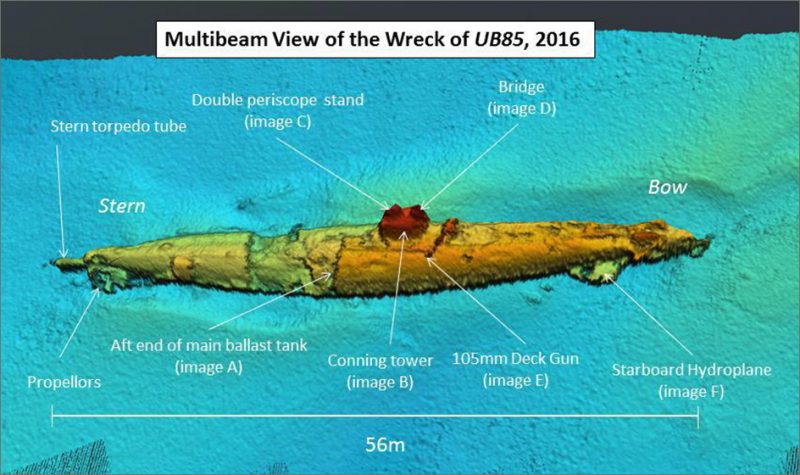Scottish marine Engineers were laying undersea power cables when they came across the wreck of a World War I German U-boat sunk almost 100 years ago.
Sonar images show that the vessel is mostly intact off the coast of Galloway, western Scotland.
Experts say that the vessel is likely UB-85 which was sunk in 1918.
That ship, according to naval folklore, was sunk by a sea monster.
It is said that the entire crew abandoned ship during the monster attack.
They were rescued by the British ship HM Drifter Coreopsis. It was on that ship that the German captain, Captain Krech, told what they had experienced.
He told of a monster with “large eyes, set in a horny sort of skull…with teeth that could be seen glistening in the moonlight”.
The captain claimed that the monster damaged the submarine to the point that it could no longer submerge.
Dr. Innes McCartney is not convinced that there was a sea monster at all. He is a historian and nautical archaeologist who helped determine the identity of the wreck.
“In reality, the real sea monster was the U-boat, here trying to sink ships,” he said.
He believes that the ship was caught on the surface while it was recharging its batteries. When it saw a patrol boat coming, it tried to crash dive but began taking on water from above, so they surfaced again. At that point, surrender was their only option.
Stories of sea monsters and haunted submarines during this era exist due to the secrecy surrounding exactly what happened during the first U-boat.
According to McCartney, at least 12 vessels were sunk in the Irish Sea, BBC News reported.
This submarine is clearly a UBIII-class submarine. Only two U-boats of that class were sunk in that area. Unless divers can find the shipyard stamp, we won’t be positive which it is.
Engineers laying the £1billion Western Link power line found the wreck 120 northwest of the planned route.
Scottish Power Transmission and the National Grid are working on the Western Link project together in order to lay the 385km (239miles) cable.
